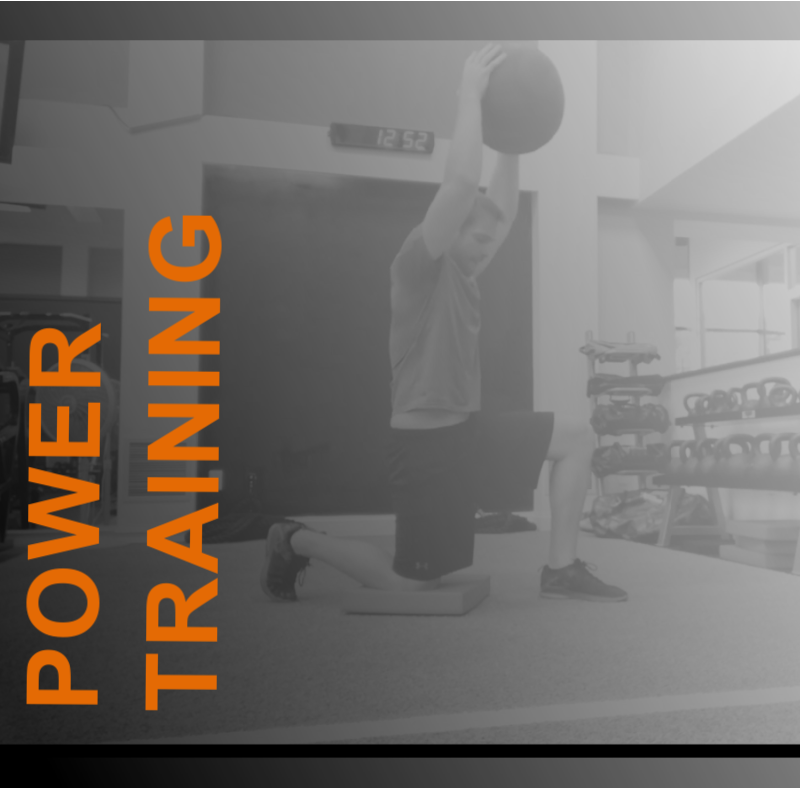
After the age of 30, we start losing up to 10% of our strength every decade thereafter; even worse we’re losing nearly three times that amount in power. Power is our ability to exert maximum muscular contraction instantly in an explosive burst of movement. In application, it’s our ability to get off the floor quickly without struggling, walk up a flight of stairs nimbly, and allows us to move through our day with relative ease and without discomfort. Every personal trainer should be cognizant of the importance of power training, especially for their middle-aged clients.
What is Power Training?
Power is the product of both strength and speed, and a major player in slowing the aging process. That’s right: power is the fountain of youth. It stimulates the nervous system and when frequently utilized, may reduce the chance of injury. It is the reason we’re all able to continue to do the things we love well into retirement.
Not surprisingly, power training aims to increase power. As we age, power ebbs more swiftly than strength does. This means if you are over 30, you should perform exercises that can produce gains in power to help sustain this invaluable ability. Unfortunately, training for power may be underutilized in most fitness programs in favor of the more ubiquitous strength and aerobic training.
Power training is carried out by finding the optimal combination of speed and weight being moved. With regard to resistance training, if personal trainers focus on the amount of weight being lifted and the number of repetitions without paying much heed to the speed of execution, opportunities are missed to reach goals and improve overall fitness. To achieve optimal power training and overall fitness results, programming should go beyond typical strength training and add speed to weight lifts.
Three Principles of Power Programming
1. Choose your tool wisely. Power can be developed utilizing many approaches, so be sure to weigh the risk to reward.
2. Power work first. It belongs at the beginning of the workout when the body is fresh and not fatigued.
3. Keep reps moderate. Super high reps or chasing fatigue when doing power work is counterproductive.
My Top 3 All-levels Power Training Exercises
Kettlebell Swings
The kettlebell swing has great carryover when it comes to power; it is an excellent way to incorporate conditioning and overall volume of training for your glutes and hamstrings. There are many studies that show how significant kettlebell swings are to power development. One study demonstrated an increase in vertical jumping from using kettlebell swing alone compared to other training modalities.
Before you have your clients start swinging a kettlebell, be sure that they have the prerequisites of a hip hinge and glute engagement down first. Here’s a video below that shows how to teach them how to do correctly.
Sandbag Cleans
The sandbag clean, my personal favorite power exercise, is a versatile tool that allows you to work in multiple planes while combining other movements to get an even more efficient workout. The sandbag clean, similar to Kettlebell swings, starts with a hip hinge motion where the power is produced by hips, hamstrings, and glutes.
Medball Slams
One of the things I love about having clients do med ball slams is that people of all ages can do them. It’s the most joint-friendly power movement and the easiest for clients to learn and do right away. Plus, we all have a little pent-up frustration so it can be fun and cathartic to take some aggression out and slam things. I call it power training, some may call it anger management. Here is a video clip of the med ball slam. (Be sure to instruct clients new to this movement to be ready to catch the ball so that it doesn’t bounce back in their face!)
Before guiding your clients, be sure to start by teaching yourself how to do the most basic power exercises first, such as med ball slams. Then once you have mastered the form, have your clients try it out. You may be surprised to hear your clients tell you they have a little bounce now in their step and they are moving around more quickly. Give your clients the best chance to fight aging by not only getting them stronger but also more powerful.






